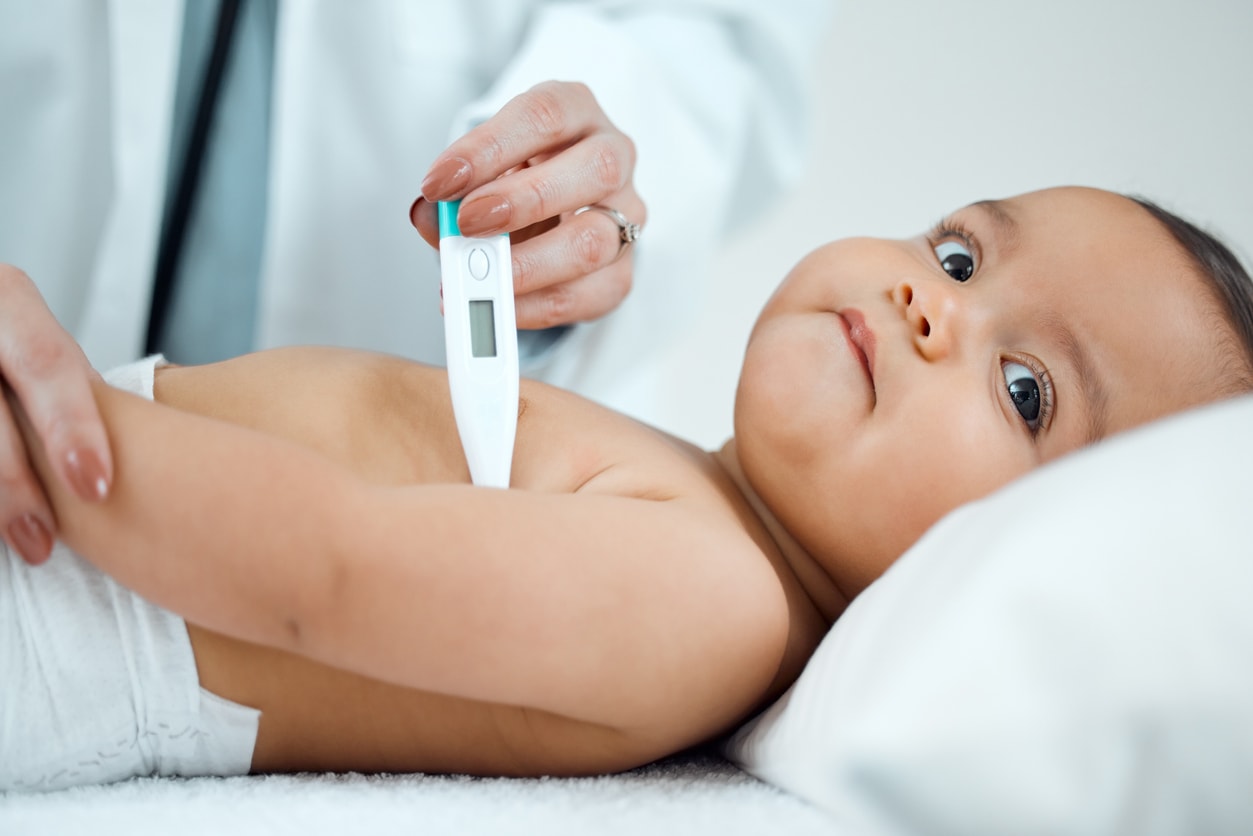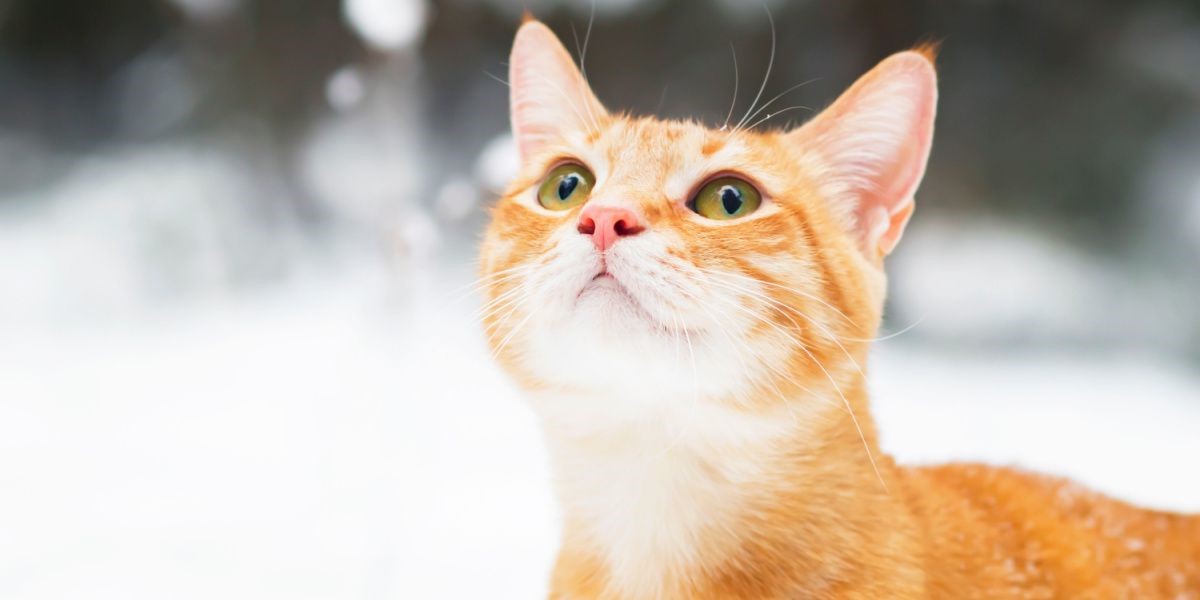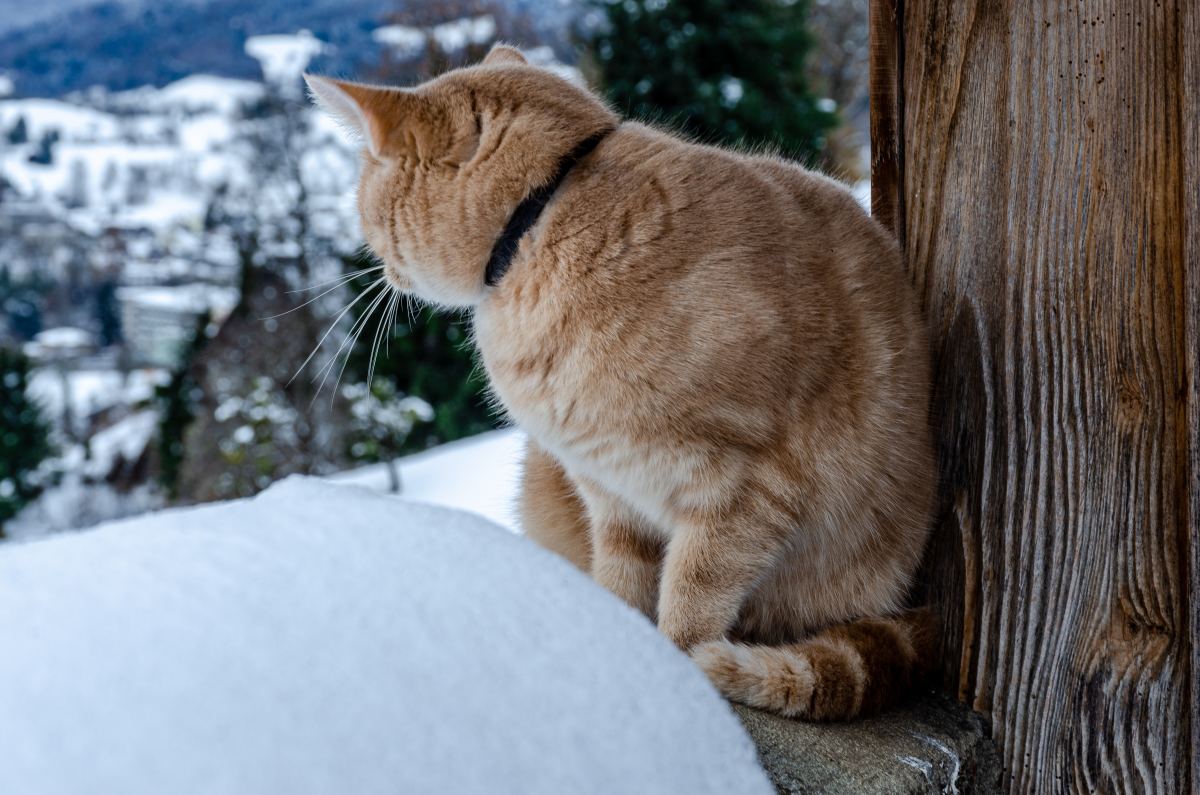Home>Health & Nutrition>The Optimal Temperature Range For Cats


Health & Nutrition
The Optimal Temperature Range For Cats
Published: March 6, 2024
Discover the ideal temperature range for cats and how it impacts their health and nutrition. Learn how to maintain a comfortable environment for your feline friend.
(Many of the links in this article redirect to a specific reviewed product. Your purchase of these products through affiliate links helps to generate commission for Temperatures.com, at no extra cost. Learn more)
Table of Contents
Understanding the Temperature Preferences of Cats
Cats are known for their unique behaviors and preferences, and their temperature preferences are no exception. Understanding the optimal temperature range for cats is crucial for ensuring their comfort and well-being. Unlike humans, cats have a higher body temperature, averaging around 101 degrees Fahrenheit. This means that they are naturally inclined towards warmer environments. However, their ideal temperature range is narrower than that of humans, typically falling between 86 and 97 degrees Fahrenheit.
Cats are highly adaptable creatures, and their temperature preferences can vary based on factors such as breed, age, fur length, and overall health. For instance, hairless breeds like the Sphynx are more sensitive to cold temperatures and may seek out warm spots to maintain their body heat. On the other hand, long-haired breeds may be more tolerant of cooler environments due to their insulating fur.
Understanding a cat's natural habitat can also provide insight into their temperature preferences. Domestic cats are descendants of desert-dwelling felines, which explains their preference for warmth. This innate preference for warmth is why cats are often found basking in sunny spots or curling up near heat sources.
It's important to note that while cats generally prefer warmer temperatures, they also seek out cooler areas when they need to regulate their body temperature. This behavior is particularly evident during hot weather, as cats may seek out cool surfaces or shaded areas to prevent overheating.
By understanding the temperature preferences of cats, pet owners can create a comfortable living environment that promotes their feline companions' well-being. This can involve providing access to warm areas during colder months and ensuring adequate ventilation and cool spots during warmer seasons. Additionally, observing a cat's behavior can offer valuable cues about their comfort level, allowing pet owners to make necessary adjustments to maintain an optimal temperature range for their feline friends.
Factors Affecting the Optimal Temperature Range for Cats
Several factors influence the optimal temperature range for cats, impacting their comfort and well-being. Understanding these factors is essential for creating a conducive environment for our feline companions.
1. Breed and Genetics
Different cat breeds have varying levels of tolerance to temperature extremes. Breeds originating from colder climates, such as the Maine Coon, are generally more tolerant of lower temperatures due to their thick, insulating fur. Conversely, breeds like the Siamese, which originated in warmer regions, may have a lower tolerance for cold temperatures. Additionally, genetic factors play a role in a cat's ability to regulate body temperature, making it important to consider breed-specific traits when assessing their temperature preferences.
2. Fur Length and Density
The length and density of a cat's fur significantly impact their ability to regulate body temperature. Cats with thicker, longer fur are better equipped to withstand colder temperatures, as their fur acts as a natural insulator. Conversely, short-haired and hairless breeds are more susceptible to cold and may seek out warmer environments to maintain their body heat. Understanding a cat's fur characteristics is crucial for providing appropriate temperature accommodations.
3. Age and Health
Age and health status can influence a cat's sensitivity to temperature fluctuations. Kittens and senior cats are generally more vulnerable to extreme temperatures and may require additional warmth during colder periods. Similarly, cats with underlying health conditions may have compromised thermoregulatory abilities, necessitating extra care to ensure they remain within their optimal temperature range.
Read more: Optimal Temperature Range For Succulents
4. Environmental Factors
The ambient temperature and humidity levels in a cat's environment directly impact their comfort. Indoor cats are exposed to controlled environments, allowing pet owners to regulate temperature settings to align with their feline companion's preferences. On the other hand, outdoor cats are subject to natural weather conditions, making it crucial to provide shelter and warmth during colder seasons and access to shaded, cool areas in warmer climates.
5. Acclimatization
Cats have the ability to acclimate to their surroundings over time. This means that they can gradually adjust to seasonal temperature changes, developing a tolerance for variations within their optimal temperature range. However, abrupt shifts in temperature can still cause discomfort, highlighting the importance of gradual acclimatization to new environments or seasonal changes.
Understanding these factors enables pet owners to make informed decisions regarding their cat's living environment, ensuring that it aligns with their feline companion's temperature preferences. By considering breed-specific traits, fur characteristics, age, health status, environmental conditions, and acclimatization, pet owners can create a comfortable and supportive space that promotes their cat's well-being.
Signs of Discomfort in Cats Due to Temperature
Recognizing the signs of discomfort in cats due to temperature is crucial for ensuring their well-being. Cats are adept at masking signs of distress, making it essential for pet owners to be vigilant and observant. When exposed to temperatures outside their optimal range, cats may exhibit various physical and behavioral indicators of discomfort.
Physical Signs
-
Shivering: In colder environments, cats may shiver as a natural response to maintain body heat. While mild shivering can be a normal physiological reaction, persistent or intense shivering may indicate that the cat is struggling to stay warm.
-
Seeking Warmth: Cats experiencing cold temperatures may seek out warm spots in the house, such as near heating vents, under blankets, or close to electronic devices. This behavior reflects their attempt to regulate their body temperature and find comfort.
-
Panting: On the opposite end of the spectrum, excessive panting in cats can signal overheating. When exposed to high temperatures, cats may pant to dissipate heat and cool down. This is particularly noticeable in warmer climates or when cats are in poorly ventilated areas.
-
Cold Ears and Paws: Touching a cat's ears and paws can provide insights into their body temperature. Cold ears and paws may indicate that the cat is feeling chilly and struggling to maintain a comfortable body temperature.
Read more: Optimal Temperature Ranges For PETG Filament
Behavioral Signs
-
Hiding: Cats may seek out secluded areas or hide in confined spaces when they are too cold or too hot. This behavior serves as a protective measure, allowing them to find a secure and potentially warmer or cooler environment.
-
Restlessness: Discomfort due to temperature can lead to restlessness in cats. They may exhibit signs of agitation, pacing, or an inability to settle down, indicating their discomfort with the current temperature conditions.
-
Lethargy: Conversely, cats exposed to excessively warm temperatures may become lethargic as a result of heat-induced discomfort. Lethargy, accompanied by reduced activity and energy levels, can be a sign that the cat is struggling to cope with the heat.
-
Excessive Grooming: Cats may engage in excessive grooming as a response to discomfort caused by temperature extremes. This behavior serves as a self-soothing mechanism, allowing them to cope with the physical and emotional stress associated with temperature discomfort.
By remaining attentive to these physical and behavioral signs, pet owners can promptly address temperature-related discomfort in their cats. Creating a comfortable and supportive environment that aligns with their feline companion's temperature preferences is essential for promoting their overall well-being and ensuring a harmonious coexistence.
Tips for Maintaining the Optimal Temperature for Cats
Maintaining the optimal temperature for cats is essential for their comfort and well-being. By implementing the following tips, pet owners can create a conducive environment that aligns with their feline companions' temperature preferences.
-
Provide Warmth During Colder Months:
- Ensure that indoor temperatures are kept within the optimal range for cats, especially during colder months. This can be achieved by adjusting thermostat settings to maintain a comfortable and consistent temperature throughout the home. Additionally, offering cozy bedding and warm spots near heat sources can provide cats with the warmth they seek during chilly weather.
-
Create Access to Sunlight and Warm Areas:
- Positioning cat beds or perches near windows or sunny spots allows cats to bask in natural sunlight, which helps them maintain their body temperature. Sunlight exposure not only provides warmth but also offers psychological benefits, contributing to a content and comfortable feline companion.
-
Utilize Heating Pads or Blankets:
- For cats that are particularly sensitive to colder temperatures, heating pads or blankets designed for pets can offer additional warmth and comfort. These can be placed in designated areas where cats frequently rest, providing a cozy retreat during colder periods.
-
Ensure Adequate Ventilation in Warmer Weather:
- During warmer seasons, it's crucial to maintain adequate ventilation within the living space to prevent overheating. This can be achieved by utilizing fans or air conditioning to circulate air and create a cooler environment for cats. Providing access to shaded areas and cool surfaces indoors can also help cats regulate their body temperature in hot weather.
-
Monitor Indoor Temperature Fluctuations:
- Regularly monitor indoor temperature fluctuations to ensure that the environment remains within the optimal range for cats. Sudden changes in temperature can cause discomfort, so maintaining a consistent and comfortable indoor climate is essential for their well-being.
-
Offer Multiple Resting Spots:
- Cats appreciate having a variety of resting spots to choose from, especially ones that cater to different temperature preferences. Providing options such as cozy beds, cool tiles, and elevated perches allows cats to select the most comfortable spot based on their current temperature needs.
By implementing these tips, pet owners can effectively maintain the optimal temperature for their cats, promoting a comfortable and supportive living environment that aligns with their feline companions' temperature preferences. This proactive approach contributes to the overall well-being and contentment of cats, fostering a harmonious and fulfilling relationship between pets and their owners.
Health Risks of Exposing Cats to Extreme Temperatures
Exposing cats to extreme temperatures poses significant health risks and can have detrimental effects on their well-being. Understanding these risks is crucial for pet owners to take proactive measures in safeguarding their feline companions from temperature-related hazards.
Heat-Related Health Risks
High temperatures can lead to heat-related health issues in cats, including heatstroke and dehydration. Cats are more susceptible to heatstroke due to their limited ability to cool down through sweating. When exposed to excessive heat, especially in poorly ventilated environments, cats may experience rapid breathing, lethargy, and elevated body temperature, all of which are indicative of heatstroke. Additionally, dehydration can occur as a result of prolonged exposure to high temperatures, leading to potential organ damage and compromised overall health.
Read more: Ideal Temperature Range For Dogs In A House
Cold-Related Health Risks
On the other end of the spectrum, exposure to cold temperatures can pose equally severe health risks for cats. Hypothermia, a condition characterized by a dangerously low body temperature, can occur when cats are exposed to prolonged cold environments without adequate warmth. Symptoms of hypothermia include shivering, weakness, and a significant drop in body temperature, which can lead to life-threatening complications if not addressed promptly.
Skin and Paw Damage
Extreme temperatures can also cause skin and paw damage in cats. Prolonged exposure to hot surfaces or direct sunlight can result in burns and discomfort, particularly on the paw pads. Conversely, cold surfaces and icy conditions can lead to frostbite, causing tissue damage and pain. Protecting cats from direct contact with extreme temperatures is essential to prevent skin and paw-related injuries.
Respiratory Issues
Sudden temperature changes and exposure to extreme cold can contribute to respiratory issues in cats. Cold air can trigger respiratory distress, especially in cats with pre-existing respiratory conditions. Additionally, abrupt transitions from extreme cold to warm environments can stress the respiratory system, potentially leading to respiratory infections and discomfort.
Behavioral and Psychological Impact
Exposure to extreme temperatures can also have a profound impact on a cat's behavior and psychological well-being. Discomfort caused by temperature extremes can lead to increased stress, anxiety, and a decline in overall mental health. Cats may exhibit signs of agitation, restlessness, and reduced activity levels when struggling to cope with extreme temperatures, affecting their quality of life and emotional well-being.
By being aware of these health risks, pet owners can take proactive steps to protect their cats from extreme temperatures. Providing a comfortable and regulated indoor environment, offering access to warm and cool areas as needed, and monitoring temperature fluctuations are essential measures to mitigate these risks and ensure the well-being of feline companions. Additionally, seeking prompt veterinary care if a cat shows signs of temperature-related distress is crucial in addressing potential health issues and preventing long-term complications.












